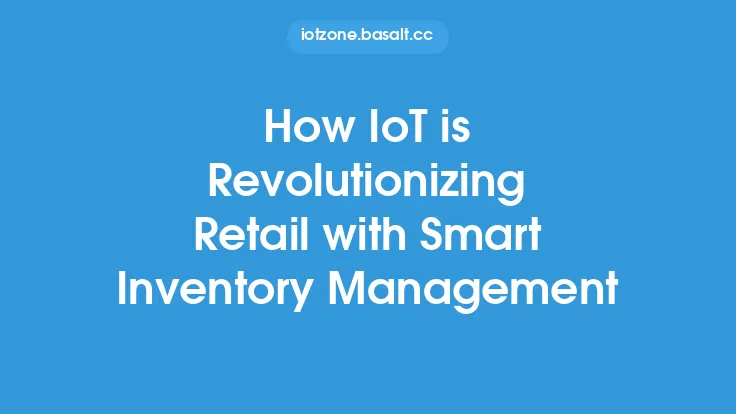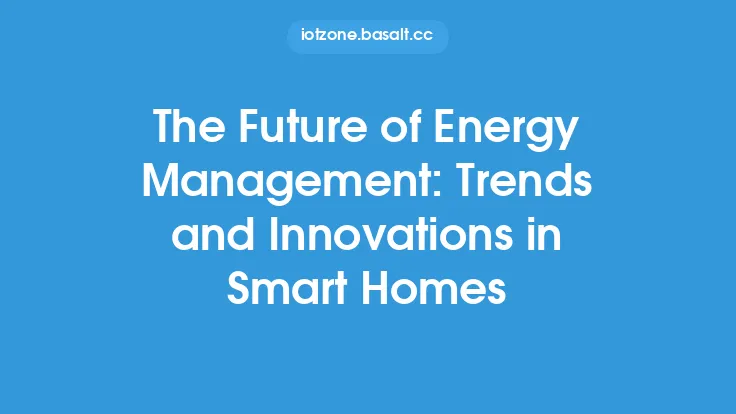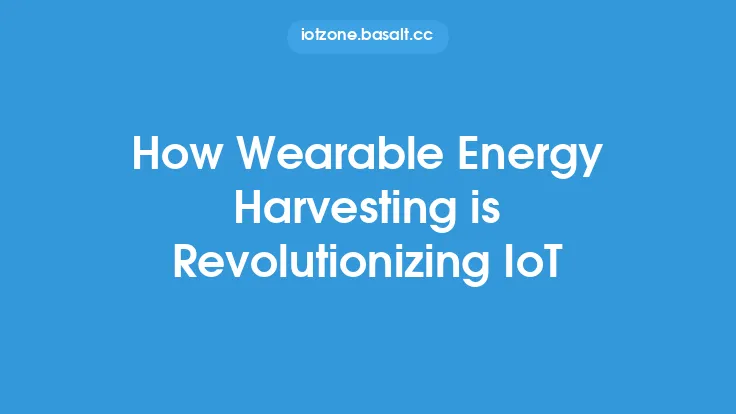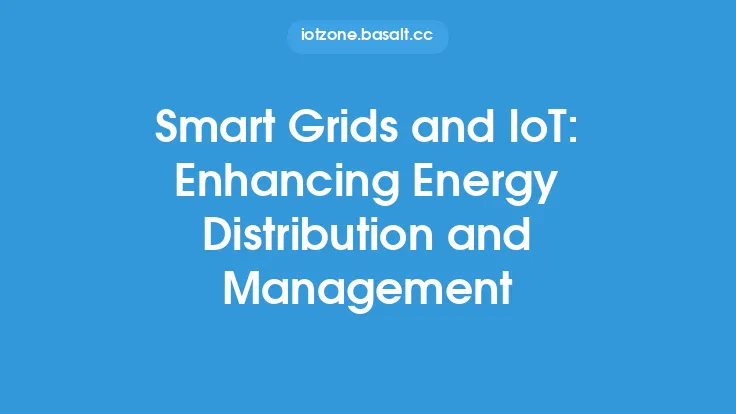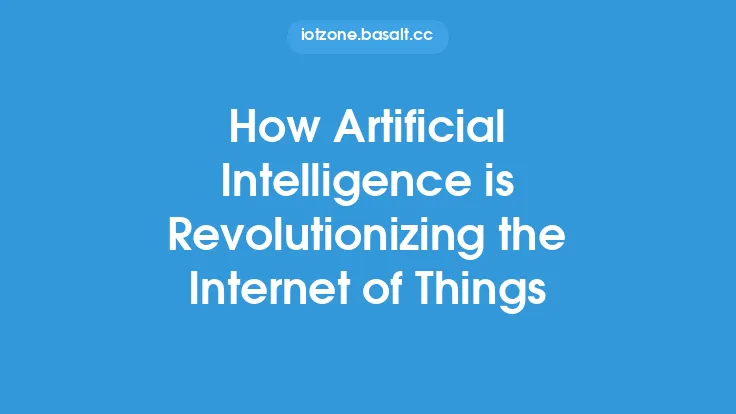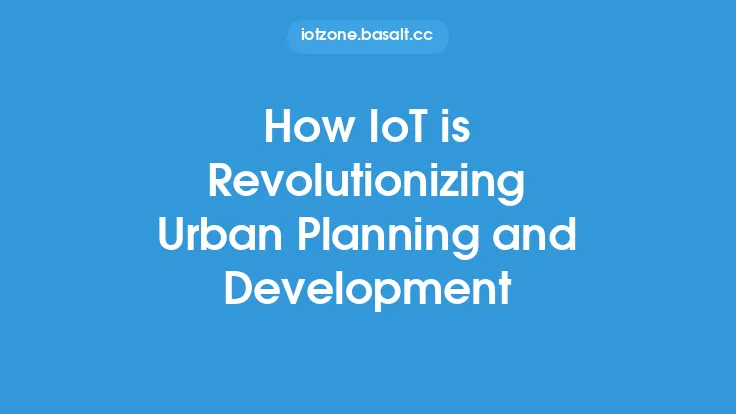The integration of Internet of Things (IoT) technology in smart buildings has transformed the way energy is managed, leading to significant reductions in energy consumption and costs. By leveraging IoT devices, such as sensors, actuators, and smart meters, building managers can monitor and control energy usage in real-time, making data-driven decisions to optimize energy efficiency. This revolution in energy management is driven by the ability of IoT devices to collect and analyze vast amounts of data, providing insights into energy usage patterns, identifying areas of inefficiency, and enabling predictive maintenance.
Introduction to IoT in Smart Buildings
IoT technology has become an essential component of smart buildings, enabling the integration of various systems and devices to create a seamless and efficient energy management system. The use of IoT devices, such as temperature sensors, occupancy sensors, and smart lighting systems, allows building managers to monitor and control energy usage in real-time. This real-time monitoring enables building managers to identify areas of inefficiency and make data-driven decisions to optimize energy usage. Additionally, IoT devices can be integrated with building management systems (BMS) and energy management systems (EMS) to provide a comprehensive view of energy usage and enable automated control of energy-consuming systems.
Key Components of IoT-based Energy Management Systems
IoT-based energy management systems consist of several key components, including sensors, actuators, and smart meters. Sensors, such as temperature sensors, occupancy sensors, and energy meters, collect data on energy usage and transmit it to a central server or cloud-based platform for analysis. Actuators, such as smart lighting systems and HVAC systems, receive commands from the central server or cloud-based platform to adjust energy usage based on the data analysis. Smart meters, such as advanced metering infrastructure (AMI) and smart grid meters, provide real-time energy usage data and enable two-way communication between the utility company and the building management system.
IoT Protocols and Standards for Energy Management
The communication between IoT devices and the central server or cloud-based platform is enabled by various IoT protocols and standards, such as Zigbee, Z-Wave, and Bluetooth Low Energy (BLE). These protocols and standards provide a common language for IoT devices to communicate with each other and with the central server or cloud-based platform. Additionally, standards such as BACnet and Modbus enable the integration of IoT devices with building management systems and energy management systems. The use of these protocols and standards ensures seamless communication and interoperability between IoT devices and systems, enabling efficient and effective energy management.
Data Analytics and Energy Management
The data collected by IoT devices is analyzed using advanced data analytics techniques, such as machine learning and artificial intelligence, to provide insights into energy usage patterns and identify areas of inefficiency. This analysis enables building managers to make data-driven decisions to optimize energy usage and reduce energy waste. Additionally, data analytics can be used to predict energy demand and adjust energy usage accordingly, enabling predictive maintenance and reducing the risk of equipment failure. The use of data analytics also enables building managers to track energy usage over time, providing a comprehensive view of energy consumption and enabling the identification of trends and patterns.
Benefits of IoT-based Energy Management Systems
The benefits of IoT-based energy management systems are numerous, including significant reductions in energy consumption and costs. By leveraging IoT devices and data analytics, building managers can optimize energy usage, reduce energy waste, and improve the overall efficiency of energy-consuming systems. Additionally, IoT-based energy management systems enable predictive maintenance, reducing the risk of equipment failure and extending the lifespan of energy-consuming systems. The use of IoT-based energy management systems also enables building managers to track energy usage and provide detailed reports, enabling compliance with energy regulations and standards.
Security Considerations for IoT-based Energy Management Systems
The integration of IoT devices in energy management systems also raises security concerns, as IoT devices can be vulnerable to cyber threats and data breaches. To mitigate these risks, building managers must implement robust security measures, such as encryption and secure authentication, to protect IoT devices and data. Additionally, building managers must ensure that IoT devices are regularly updated and patched to prevent vulnerabilities and exploits. The use of secure communication protocols, such as Transport Layer Security (TLS) and Secure Sockets Layer (SSL), also ensures the secure transmission of data between IoT devices and the central server or cloud-based platform.
Future of IoT in Energy Management
The future of IoT in energy management is promising, with advancements in IoT technology and data analytics enabling even more efficient and effective energy management. The integration of emerging technologies, such as artificial intelligence and machine learning, will enable building managers to make even more informed decisions about energy usage and optimize energy efficiency. Additionally, the use of IoT devices and data analytics will enable the development of new energy management applications, such as energy storage and grid management. As the use of IoT technology continues to grow and evolve, it is likely that we will see even more innovative and effective energy management solutions in the future.
Best Practices for Implementing IoT-based Energy Management Systems
To ensure the successful implementation of IoT-based energy management systems, building managers must follow best practices, such as conducting thorough energy audits and assessments to identify areas of inefficiency. Additionally, building managers must ensure that IoT devices are properly installed, configured, and maintained to ensure accurate and reliable data collection. The use of standardized protocols and standards, such as BACnet and Modbus, also ensures seamless communication and interoperability between IoT devices and systems. Furthermore, building managers must ensure that IoT-based energy management systems are regularly updated and patched to prevent vulnerabilities and exploits, and that robust security measures are implemented to protect IoT devices and data.
Conclusion
In conclusion, the integration of IoT technology in smart buildings has revolutionized energy management, enabling building managers to monitor and control energy usage in real-time and make data-driven decisions to optimize energy efficiency. The use of IoT devices, data analytics, and advanced protocols and standards has enabled the development of efficient and effective energy management systems, providing significant reductions in energy consumption and costs. As the use of IoT technology continues to grow and evolve, it is likely that we will see even more innovative and effective energy management solutions in the future, enabling building managers to optimize energy usage and reduce energy waste.
